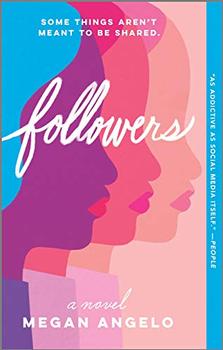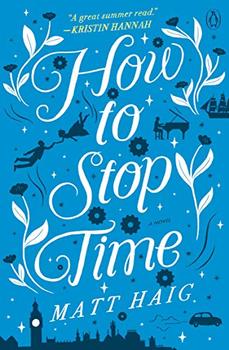Summary | Excerpt | Reviews | Beyond the book | Read-Alikes | Genres & Themes | Author Bio

The world changes, but humanity stays the same. Whether a book takes place in the year 1510 or 2010, we can still relate to the characters, because despite their differences, they share universal drives. Love, loss, and longing have always existed and will always exist. Jodi Lynn Anderson, bestselling author of Tiger Lily, has made a name for herself exploring the subtle and sentimental conditions of the human experience. Midnight at the Electric weaves together the tale of three very different—yet very similar—girls from three divergent settings, and is another winning addition to Anderson's repertoire.
The book begins in Kansas in the year 2065, with teenager Adri preparing to move to Mars, as part of a handpicked team of colonists testing out future leads for a sickly Earth. An orphan with no ties to her home planet, Adri is eager to leave and never look back. However, as part of the program, she must first spend her remaining time on earth with her elderly cousin, Lily, who is the warm, chatty counterpoint to Adri's coldness.
While at Lily's, Adri discovers the diary of Catherine, who used to live in the same house more than one hundred years ago. Catherine writes from Oklahoma in the year 1934, and her story takes us another layer deeper into the past through a series of letters. Written by Catherine's mother's former best friend, Lenore, this set of correspondence originates from England in 1919. Even if Adri has always established emotional barriers between herself and the outside world, she quickly finds herself obsessed with these stories from the past.
Evenly divided between the characters, the novel is formatted as a story within a story within a story. While this setup could be confusing, Anderson handles the various threads with a comfortable finesse that makes the transitions logical and builds suspense. Letter and diary formats also sometimes feel gimmicky (who actually spells out everything they are thinking and feeling in a letter, with such pretty descriptions?) and while some of Lenore's correspondence threatens to flare up this gripe of mine, overall she is self-absorbed enough that the introspective prose actually fits her personality.
Speaking of personality, the characters really drew me in. Readers who crave fast-paced or thrilling plotlines may be disappointed, but Anderson puts such work into character development that most will find themselves hooked. Each of the young women has a delightfully distinct voice. At first, Adri comes across as prickly for no reason, but as the story unfolds, we see her develop enough that her walls begin to tumble. We feel Adri's pain, and her catharsis, when she tells Lily that "I think all my life my heart's been broken…and I didn't even notice. And I don't even know by what."
Heartbreak is one of two important similarities that the three protagonists share. Whether familial, romantic, or something more ambiguous, each girl knows what it's like to experience loss. Midnight at the Electric is a story about fragmented people just trying to become whole. Also, each girl hinges her future on shifting locations, and believes her fortune can only be found in a place far away from her own. Catherine is determined to escape the Dust Bowl by heading north, Lenore thinks a one-way ticket to America will help her outrun her brother's recent death, and Adri is willing to head all the way to another planet on her search for that intangible something that will make everything alright. The idea of such a cure ties the novel together beautifully. While in some cases, the shifting locations actually do provide relief, they are accompanied by bittersweet consequences which help end the novel on a lovely multifaceted note.
Although Anderson won me over with her astute portrayal of heartache and hope, I was less taken with the setting. All three stories provide glimpses of different worlds – during the Dust Bowl, immediately after the First World War, and just before the colonization of a new planet. However, only the Dust Bowl chapters create a vivid and evocative backdrop; Lenore's early 20th century setting feels lackluster. And science-fiction fans may be disappointed as Adri's future on Mars is more of a way for Anderson to explore the psychological and emotional ramifications of such a move than to showcase any great world-building.
Still, with stark and honest descriptions, strong writing, and complicated characters, Midnight at the Electric offers a brief escape into the lives of three young women whose stories will linger in your mind.
![]() This review was originally published in The BookBrowse Review in July 2017, and has been updated for the
July 2019 edition.
Click here to go to this issue.
This review was originally published in The BookBrowse Review in July 2017, and has been updated for the
July 2019 edition.
Click here to go to this issue.

If you liked Midnight at the Electric, try these:

by Megan Angelo
Published 2020
An electrifying story of two ambitious friends, the dark choices they make and the profound moment that changes the meaning of privacy forever.

by Matt Haig
Published 2019
A love story across the ages - and for the ages - about a man lost in time, the woman who could save him, and the lifetimes it can take to learn how to live.
Education is the period during which you are being instructed by somebody you do not know, about something you do ...
Click Here to find out who said this, as well as discovering other famous literary quotes!
Your guide toexceptional books
BookBrowse seeks out and recommends the best in contemporary fiction and nonfiction—books that not only engage and entertain but also deepen our understanding of ourselves and the world around us.